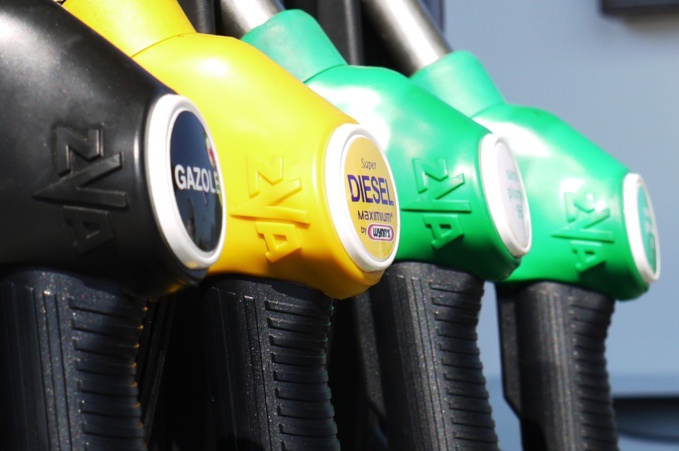Apparently, oil companies are not going to recklessly spend money anymore, but OPEC’s agreement to cut production has given them confidence, says Wood Mackenzie. According to the experts, independent American companies may show the biggest increase in investment - more than 25% at an average price above $ 50 per barrel in 2017. However, many investments will be concentrated in regions with low production costs, such as shale play Permian Basin in the United States, where price of crude oil at the wellhead fell from over $ 80 in 2013 to $ 30-40 in 2016 (in some areas it is even below $ 30 per barrel). However, large companies such as Exxon Mobil and Royal Dutch Shell still want to lower investment by 8% due to collapse of capital-intensive projects approved before the collapse in prices.
It is expected that oil and gas production of 60 companies will increased by an average of 2% in 2017. This indicates an improvement in performance, as costs of development of new deposits declined by more than 40% from 2014.
After OPEC agreed to cut production on 30 November, oil has risen sharply. Recently, Brent price rose to nearly $ 58 per barrel. In recent days, Brent has been trading at around $ 55 per barrel, which is about twice as expensive than in January, when prices fell to a more than 12-year low.
In December, the International Energy Agency (IEA) has improved its forecast for oil demand in the world in 2017 to 97.6 million barrels a day, from the previously expected 97.5 million barrels. Fforecast for the current year still predicts 96.3 million barrels. "Growth in global demand is projected to amount to 1.4 million barrels per day in 2016 and 1.3 million barrels per day in 2017", - reported the IEA.
Demand in Europe in 2016-2017 is expected to reach 14.6 million barrels per day, the figure for the Americas is set at 31.3 million barrels per day. In the Asia-Pacific region, demand could reach 33 million barrels per day, and is expected to increase to 33.9 million barrels per day in 2017. In Africa, demand in 2016 is forecasted at 4.2 million barrels per day, and in 2017 – at 4.3 million barrels per day.
Meanwhile, JP Morgan raised its forecast for oil prices in 2017. The bank reckons that sentiments around the major oil producers are overly cautious. Nevertheless, the bank's analysts still warn that the industry once again would lose the market in the fourth quarter.
"Consensus forecast of volume and duration of oil production cuts in OPEC and its member countries proved to be too cautious, moving the short-term price risks to the upside" – the analysts explained raising its forecast price per barrel of Brent crude to $ 58.25 and of WTI - up to $ 56 25.
"However, we now expect growth of fears that a fraud will inevitably undermine commitment to the agreement at some point during the second half of the year" - they warn.
These experts say that any "cheating" on the deal is likely to coincide with rebound of production of shale oil in the United States, which will lead to higher prices.
"Thus, we now anticipate a return of increased reserves in the fourth quarter of 2017, which will have a renewed downward pressure on oil prices," - conclude the experts.
source: ft.com
It is expected that oil and gas production of 60 companies will increased by an average of 2% in 2017. This indicates an improvement in performance, as costs of development of new deposits declined by more than 40% from 2014.
After OPEC agreed to cut production on 30 November, oil has risen sharply. Recently, Brent price rose to nearly $ 58 per barrel. In recent days, Brent has been trading at around $ 55 per barrel, which is about twice as expensive than in January, when prices fell to a more than 12-year low.
In December, the International Energy Agency (IEA) has improved its forecast for oil demand in the world in 2017 to 97.6 million barrels a day, from the previously expected 97.5 million barrels. Fforecast for the current year still predicts 96.3 million barrels. "Growth in global demand is projected to amount to 1.4 million barrels per day in 2016 and 1.3 million barrels per day in 2017", - reported the IEA.
Demand in Europe in 2016-2017 is expected to reach 14.6 million barrels per day, the figure for the Americas is set at 31.3 million barrels per day. In the Asia-Pacific region, demand could reach 33 million barrels per day, and is expected to increase to 33.9 million barrels per day in 2017. In Africa, demand in 2016 is forecasted at 4.2 million barrels per day, and in 2017 – at 4.3 million barrels per day.
Meanwhile, JP Morgan raised its forecast for oil prices in 2017. The bank reckons that sentiments around the major oil producers are overly cautious. Nevertheless, the bank's analysts still warn that the industry once again would lose the market in the fourth quarter.
"Consensus forecast of volume and duration of oil production cuts in OPEC and its member countries proved to be too cautious, moving the short-term price risks to the upside" – the analysts explained raising its forecast price per barrel of Brent crude to $ 58.25 and of WTI - up to $ 56 25.
"However, we now expect growth of fears that a fraud will inevitably undermine commitment to the agreement at some point during the second half of the year" - they warn.
These experts say that any "cheating" on the deal is likely to coincide with rebound of production of shale oil in the United States, which will lead to higher prices.
"Thus, we now anticipate a return of increased reserves in the fourth quarter of 2017, which will have a renewed downward pressure on oil prices," - conclude the experts.
source: ft.com



















